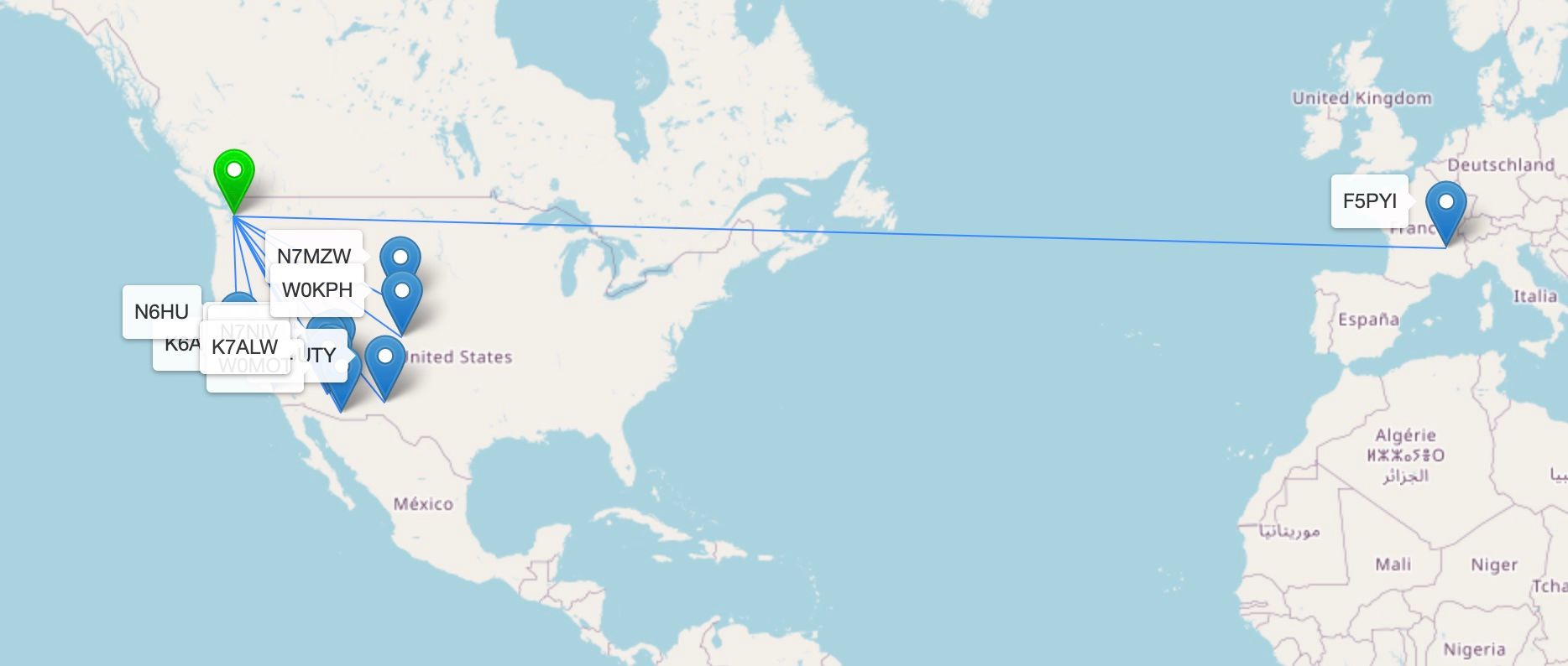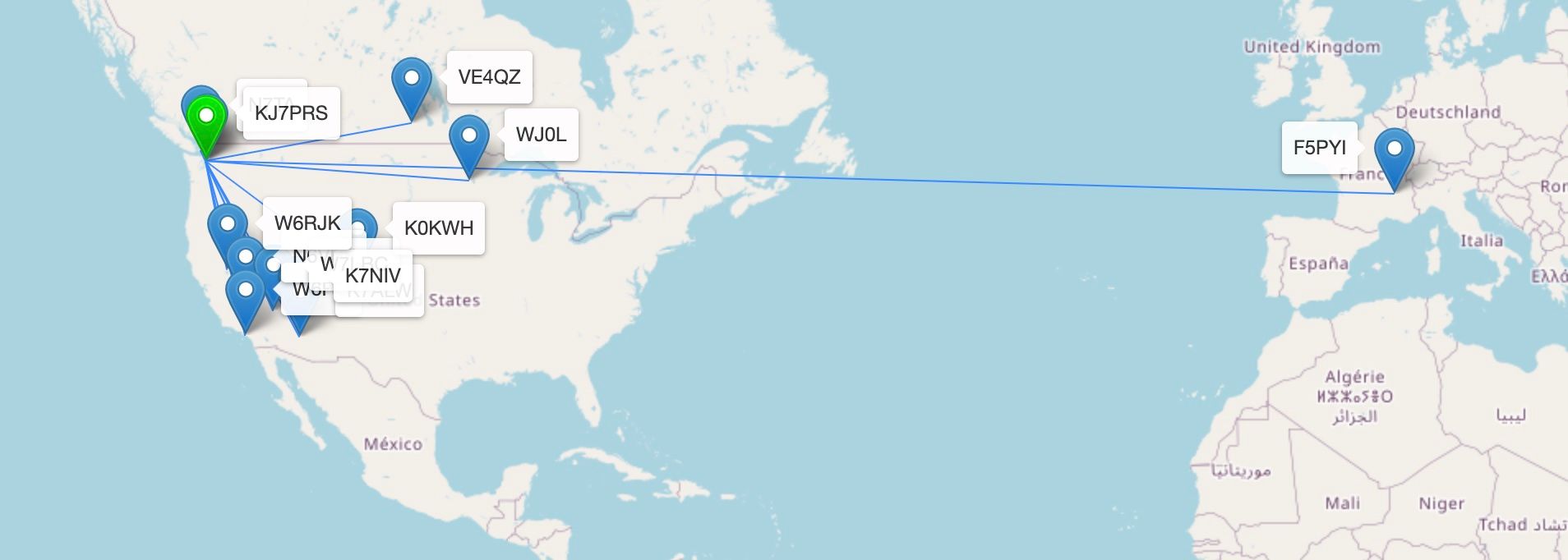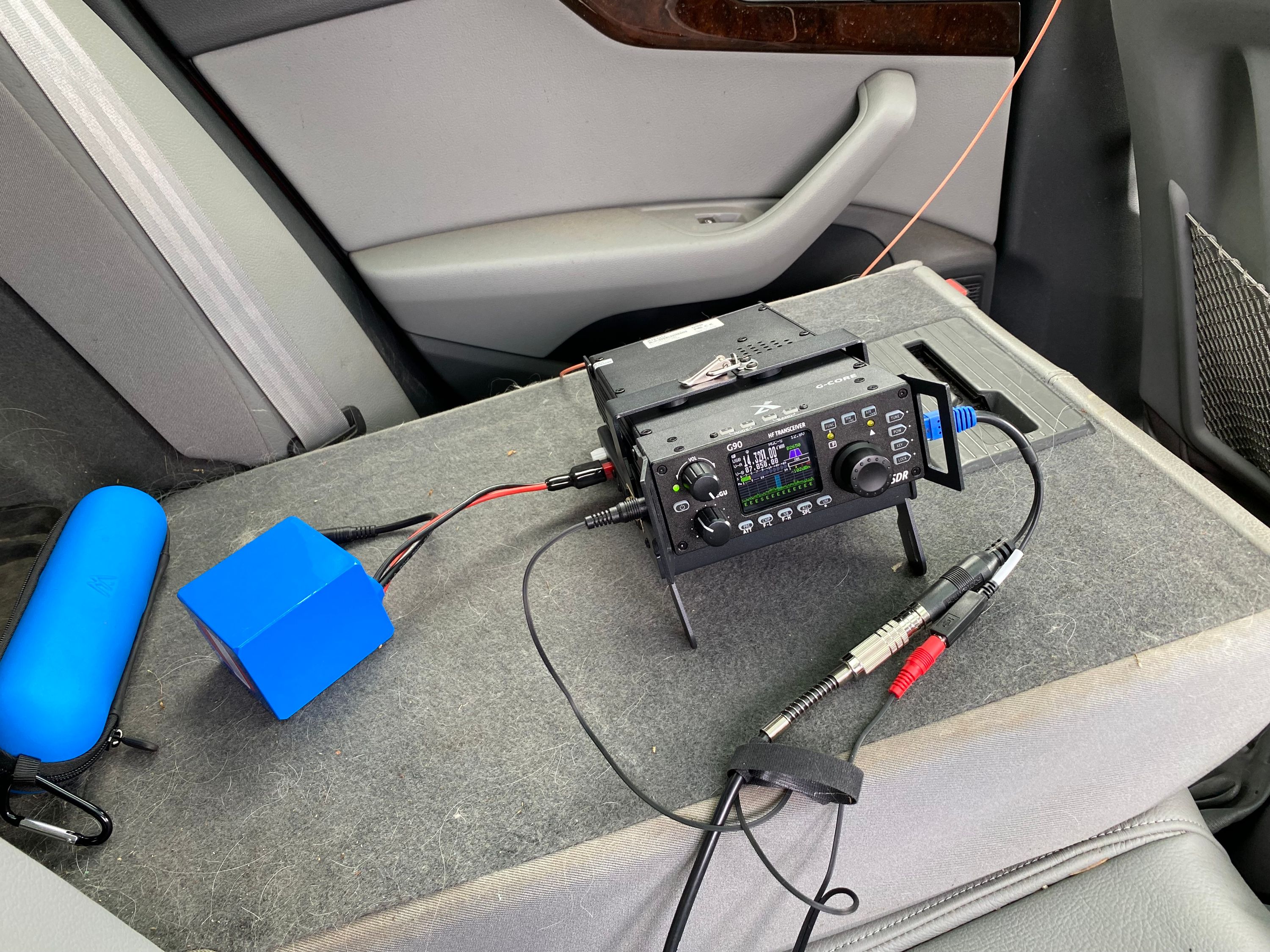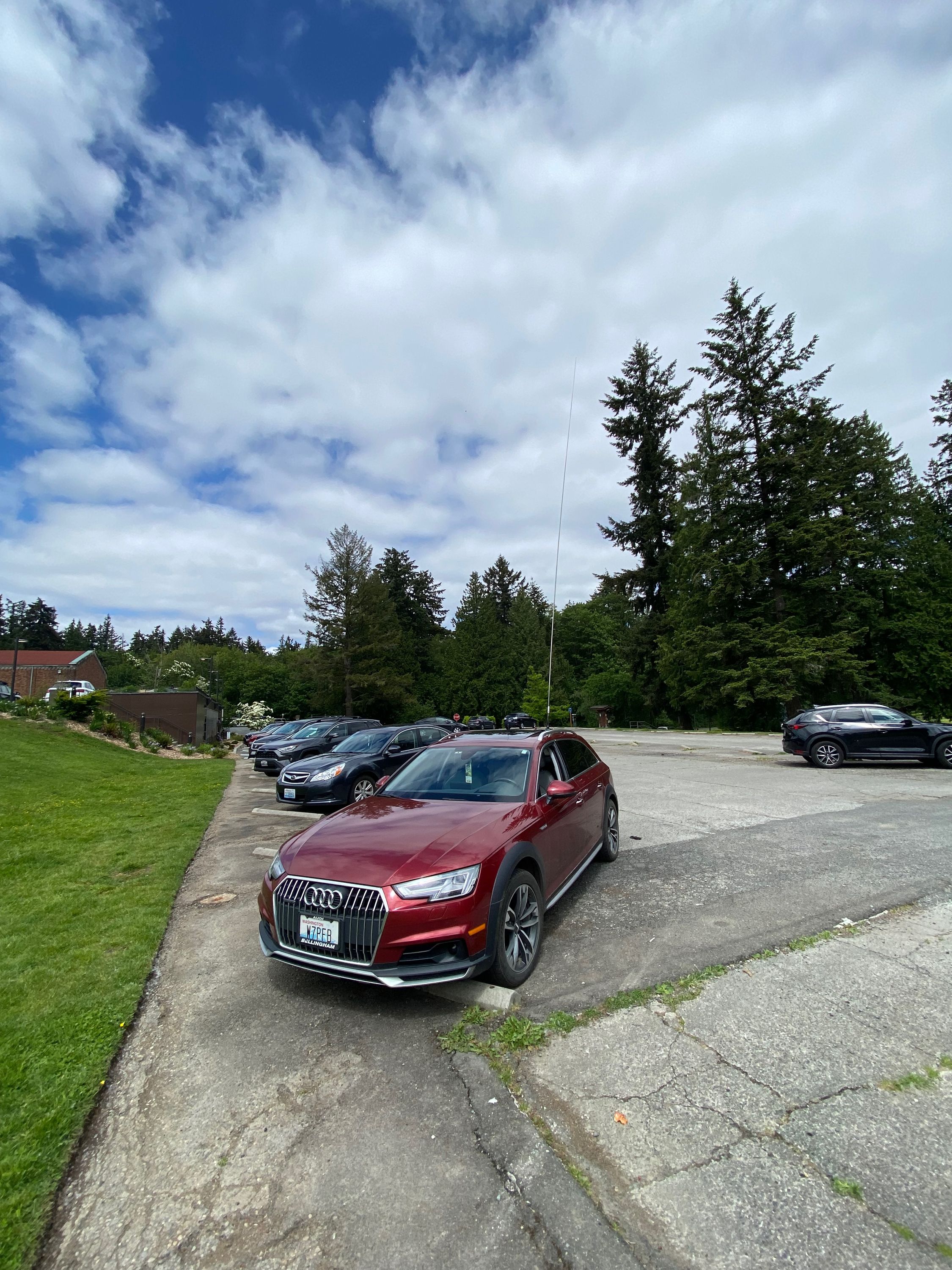Two Activations - Bridle Trails SP (US-3166) & St. Edward SP (US-3261)
We had to go pick up Paula’s car at the shop yesterday, mid-morning, and so I loaded up my car with the radios/antennas, &c, and planned on activating a couple of parks and amortizing the driving across both picking the car up, and having some fun.
Bridle Trails SP (US-3166)
Bridle Trails SP is an oasis of forest in the middle of what is now the suburbs north of Bellevue and south of Kirkland. It’s largely a place where the horsey folks who live in that area ride their horses, and there’s what to me seems to be a fairly large equestrian facility there, but the trail system in the park is also used by runners and many footraces are held there all year long.
As always, I was hoping for a relatively quick activation, and so I planned to work in my usual style, with the radio set up in the back seat of the car, feeding the 17’ whip on the magmount on top of the car.
The parking arrangements at Bridle Trails are, erm, limited, and so I was a little pressed to find a parking spot which met my usual criteria: out of the way of other park users, away from sources of RFI, and with overhead clearance for the 17’ whip. I finally found a spot where I could fit the antenna up through a gap between two trees, and cell service was very good, so in short order I had spotted myself on pota.app and was QRV.
Before spotting myself, I took the time to spin through the spots on pota.app and see who I could hear, purely as a way to get some feel for what current conditions were like. This netted me a two-fer park to park contact with Molly W3NY. That was fun and I’m thinking in the future all my activations will start with a little P2P hunting.
Conditions were not really all that good propagation wise. I was reliably getting and giving good signal reports into the southwest US but everywhere else was either sketchy or simply no-go. It took me a little over an hour to get 13 contacts in the log, and I was starting to give some thought to wrapping up and moving on to St. Edward State Park. I did a little hunting to pad the QSO count, for insurance, and then switched back to calling CQ.
And then, I called CQ, and thought maybe I heard someone answering. The signal was very faint, and I thought maybe I was imagining it, and then in response to my request that the station repeat their callsign, I could hear the station repeat five or six times. The other operator was incredibly patient, as it took me asking for repeats many times before I managed to work out their callsign was F5PYI. I think I have a signal report of 21, or maybe 11. To my surprise it sounded like the report I got back was 55, which seems impossible.
But I will take QSO’s no matter what, and so I was thrilled beyond words to put Larry F5PYI in my log. Later that afternoon when I had time I worked out that this QSO was on the order of 5400 miles, all on 20W SSB into a simple 1/4λ vertical whip.
Almost immediately after F5PYI I got a call from Wyoming, which gave me the feeling that maybe propagation was improving, or at least changing, and this would be a good time to move on to St. Edwards SP.
One last spin of the dial netted me one final P2P contact, and then I struck my setup down into the car and made the short drive to the next park.

Saint Edward State Park (US-3261)
Saint Edwards State Park offers a lot more flexibility for activations, with quite a lot of parking with good overhead clearance and some really nice areas to do picnic table activation. So I think I’ll likely return for a much more relaxed, longer activation working from the picnic tables, probably using the Chelegance MC-750.
In any case my first contact was W6RJK from California, a very weak 32 signal and I was wondering if I would be able to get 10 contacts in the limited time I had remaining before I needed to push off to an appointment.
Imagine my surprise when I called CQ and got a very very faint response, just barely enough signal to know there was a caller. Given that it was about 20 minutes since I worked him at the previous park, it took me considerable effort and repeated requests for repeats before the light came on and I realized it was Larry, F5PYI. Bingo, into the log it went, and mentally I did a little celebratory dance at bagging F6PYI not just once, but twice, from two different parks.

Final thoughts
I’m getting pretty sick of working from the car, and with the weather improving it’s clearly time to move away from that setup and start doing activations picnic table style, which will mean different antennas and hopefully new learning experiences.
But for a quick activation in limited time, it’s tough to beat the car setup, as I can park the car, pop open the sunroof (to run the feedline to the radio), plop the antenna on the roof with the whip extended, and be on the air in two minutes.
There’s a part of me that thinks that I’d be having an easier time getting contacts (and get more contacts) if I were running more power, but there’s another part of me that thinks the challenge of running semi-QRP is increasing the fun.
Observation: Here’s the antenna Larry F5PYI was using during our two QSO’s:  Larry says this is a 16 element 3 band Yagi at 22 meters AGL. In email he tells me he was running 1KW.
Larry says this is a 16 element 3 band Yagi at 22 meters AGL. In email he tells me he was running 1KW.
In comparison, my station looked like this: 
 I was running 20W.
I was running 20W.
And yet despite the disparity between our stations, we both had fun and treasure the QSO.
And that leads me to ponder: what, exactly, is my goal for the time I spend playing POTA? The POTA website makes it easy to watch the total number of QSO’s you’ve made, the total number of parks you’ve activated, how many park to park contacts you’ve had. What the POTA website doesn’t do (and cannot do) is track what I sense is really important, here, which is how much fun was had.
Sadly, like running, the world of amateur radio does not possess what I call a fun-o-meter. And the easy availability of metrics like those provided by POTA can be a distraction, in the sense that what gets measured gets managed even if what gets measure is a poor proxy for what really matters to us.
What made those two QSO’s with Larry F5PYI so rewarding? It’s easy to think that it was the technical achievement of a contact spanning 5400 miles with generally poor propagation and a mere 20W on one end is what made it valuable. And in some sense, yes, that’s part of what made those two QSOs such a delight. But it’s also the case that on my end, at least, closing the deal to get F5PYI into my log required considerable operating skill, careful operating procedure, and quite a lot of bloody-minded grit to persist in getting the information across despite Larry’s signal being so very faint and buried in noise. And conquering those challenges was more important than the distance covered. If it had been a QSO with someone operating QRP from a park bench somewhere less exotic to me than France, it would still have been a delight to get that contact done.
In ultrarunning, the recurring question is often “when push comes to shove, how much discomfort can I take, how much can I push myself, how far can I really go?”
And I am finding that there’s an aspect of playing radio in the field which seems to boil down to “What can I accomplish with gear that seems so limiting that every contact is a bit of a challenge?”
I have started to think of this as thin radio, by which I mean radios that cannot transmit with great power, and communication modes which require little hardware assistance. It’s one thing to let your laptop (or phone, or tablet) dig an FT8 signal that cannot be heard and cannot even be seen on your waterfall out of the noise, and announce the completion of a QSO. And it seems to me to be something else entirely to dig that very faint CW signal out of the noise using your own brain, and decode the morse code yourself, and then transmit morse back using a set of paddles.
So my G90 is a somewhat skinny radio - 20W output, not very sophisticated filtering and noise reduction.
My KX3 is in some ways thinner than the G90 (lower power, for one) and in other ways not as thin (much better filtering and NR).
In the end everyone gets to pursue the challenges they want, and I’m not knocking hams who build stations like Larry’s - after all, having Larry as a hunter is greatly to my benefit when I’m doing a thin activation.
But I increasingly find myself wondering how I can improve my operating skills so that I can work with increasingly thin radios.
